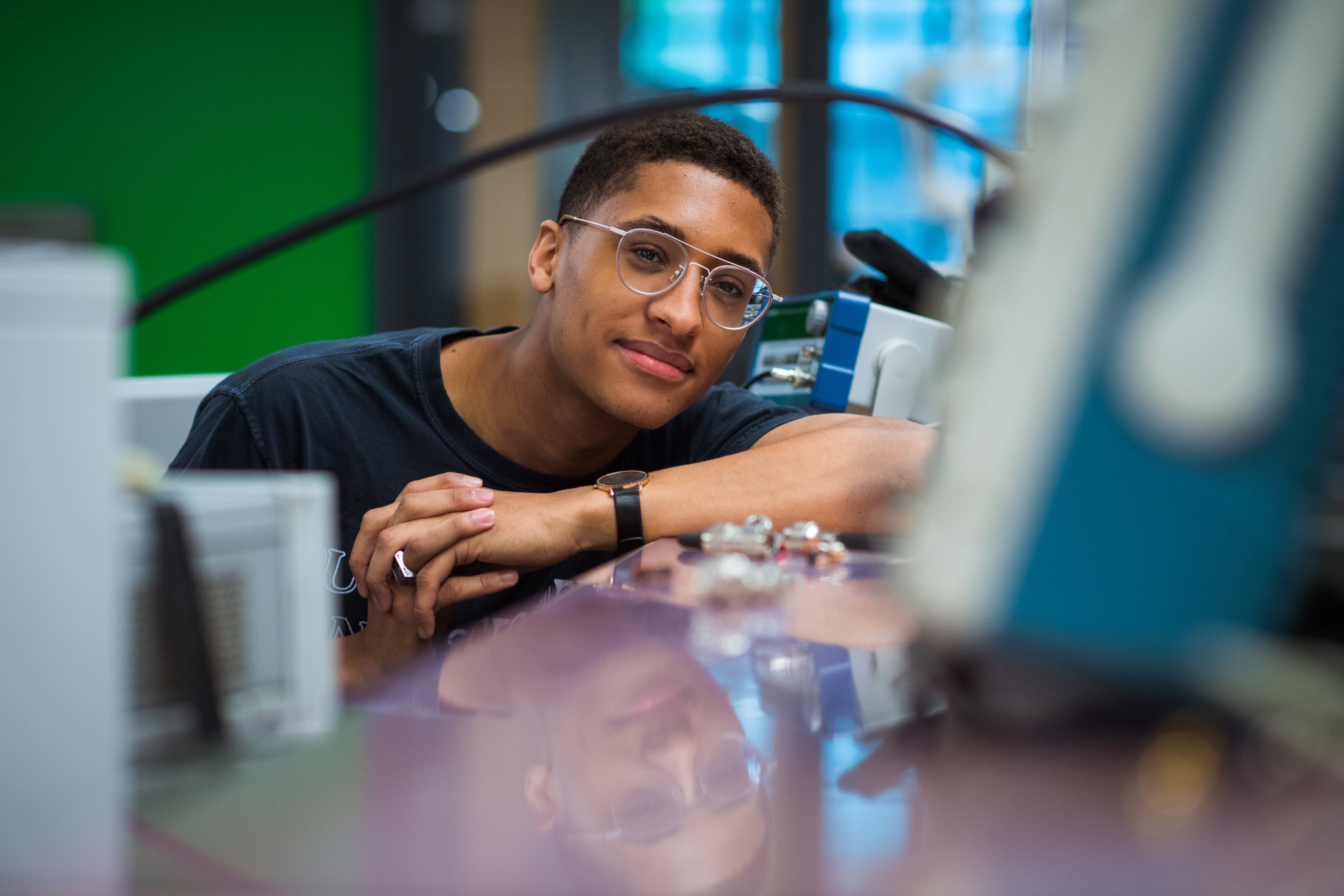The Practice of Moving Energy Around
-
-
Slice of MIT
Filed Under
One of the things Rod Bayliss III ’20, MEng ’21 remembers most clearly from his childhood is his father’s 1964 Ford Mustang. “I was fascinated by that car,” says Bayliss, who won the Black Alumni/ae of MIT (BAMIT) research slam this past March. “Especially by the engine, this thing that converted oxygen and fuel into power.”
Bayliss spent the bulk of his youth in Augusta, Georgia. Math and physics came easily to him, and in high school he developed a passion for Latin, Greek, and debating. “I particularly loved Latin grammar,” he recalls, “with the declensions that let you move words around in a sentence. It reminded me of solving engineering problems.”
I particularly loved Latin grammar, with the declensions that let you move words around in a sentence. It reminded me of solving engineering problems.
When Bayliss came to MIT in 2016, his parents, both of whom hold undergraduate degrees in engineering, urged him to consider the career opportunities within electrical engineering. As a sophomore, he signed up to work with faculty member David Perreault SM ’91, PhD ’97 and the MIT Power Electronics Research Group through the Undergraduate Research Opportunities Program (UROP.)
“At the time I still thought I wanted to work on engines,” says Bayliss. “But in that UROP I discovered power electronics. The practice of moving energy around. That was the name of the game, and I loved it.”
During the UROP, Bayliss learned how electric energy is generated, stored, and transformed. He began work on an inductor, a device that can store large amounts of magnetic energy. That particular inductor would serve to generate high-frequency radio waves—a crucial element in the process of etching ultrafine silicon chips. “You put gas into a chamber and then use those radio waves to phase-change the gas into plasma,” he explains. “Then you direct the plasma to do the etching. The process requires enormous amounts of energy.”
Completing his undergraduate degree in three-and-a-half years, Bayliss stayed on at MIT—and continued to perfect his inductor—for an additional year, earning a master’s in January 2021. He is now in a doctoral program at the University of California at Berkeley.
Fittingly, he’s returned to his first engineering crush: motors. Specifically, he is researching new methods of storing and converting electrical energy into a form that could reliably power an aircraft engine. Bayliss knows the objective is complex. “It’s uniquely more challenging to power an aircraft with electricity than with fossil fuels,” he says. “The batteries are heavy. And the consequences of system failure—from the battery to the inverter to the motor—in midflight would be catastrophic. But we’re going to make these aircraft power electronics work out.”
Photo (top): Bayliss in 2019 during his MIT UROP.
Whether you’re marking a milestone reunion year or celebrating the one-year anniversary of your graduation, like Rod Bayliss, there’s something for you at MIT Tech Reunions, which will take place as a multiday online event June 4–6.
In addition to special online events for reunion-year classes, the entire MIT community can learn from faculty during Technology Day, watch the online Tech Night at Pops, and explore sessions that highlight the MIT campus, programs, and departments. Learn more about how you can participate in Tech Reunions.









